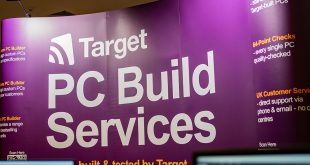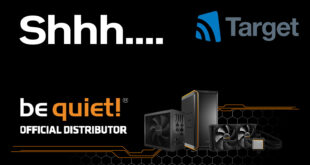Steve White, Target Components’ CTO gives his take on the five eclectic pieces of standout tech in his life.
The Transistor
I studied electronics at college and then worked in the electronics industry for 10 years designing circuit boards, before making the move into IT. Transistors are at the heart of all modern day electronics, and it’s fair to say that very little of the technology we have now would have been possible had it not been for the invention of the transistor. These started life as fairly large devices, but soon started to become smaller, and eventually transistor radios became the first real portable application of transistors back in the 1950’s. Transistors have been getting smaller and smaller over the years, and now we have CPU devices that contain billions of transistors in something smaller than a matchbox. So in terms of the technology I couldn’t live without, this has to take the top spot – often overlooked and hidden away, these tiny devices are pretty much powering the World, keeping us mobile and allowing us to communicate with anyone, anywhere.
The Coffee Machine
The myth of IT techies living on coffee and pizza is 50% true for me. I get called a ‘coffee obsessive’, ‘caffeine junkie’, ‘coffee snob’, all of which are perfectly true – the World without coffee doesn’t bear thinking about… And to keep me pepped up throughout the day I have my Sage Barista Express BES-875 bean-to-cup coffee machine. It gets my choice of (single-estate, obviously) coffee beans to the perfect grind, pumps the right amount of water through the beans at about 15 bars, all in a beautifully-designed stainless steel chassis, then delivers a thimble-full of Black Gold, ready for consumption. I choose espressos first thing in the morning (as a proverbial kickstart for the brain), then mellow things out later with a Flat White. Do I want that with perfectly stretched, thick-foamed, hot milk? You bet! I’ve had a LOT of different coffee machines over the years, from French press to stovetop and automatic, but the Sage Barista Express is by far the best.
Network Attached Storage
The NAS has progressed a lot from its days as a hard drive attached to a router. Often overlooked because of Cloud storage, I still prefer to know where my data is being kept but have access to it wherever I am, and that’s where the NAS comes in. Everything is now digital and, like everyone else, I have an ever-growing mountain of documents, photos, videos and music, etc. But where do we store it all? … A computer disk? But this alone is cumbersome, time consuming, and only accessible on one computer. Step in – NAS. NAS has expandable storage, redundancy, can attach to (and therefore be accessed from) any network. QNAP, and archrival Synology, now boast a huge range of apps that do everything from acting as a media server to hosting websites. And the whole family, including the kids, have access to their own and shared areas of it. More importantly, it also acts as a RAID backup so everyone’s got all their data safely stored and accessible.
Virtualisation
Once upon a time, server rooms were filled with racks of servers, each server having a specific function. Most of the time, these servers were sat doing very little, which was a waste of resource. That was until the birth of Virtualisation. The concept of virtualisation was to fully utilise the physical hardware by running multiple operating systems (virtual servers) on that same hardware, therefore cutting down on the number of physical servers needed in the server room. Not only did this make server rooms smaller, but there was less power and therefore less cooling required, all of which helped the carbon footprint of everyone who adopted the technology. VMware and Microsoft are arguably the leaders in this technology, and have both developed the concept to a point where you would almost have to justify why you wouldn’t want to use it. For me, virtualisation is a classic “thinking outside the box” invention that most IT departments around the globe have since adopted.
Tesla Cars
As a kid, I often wondered what the car of the future would be – a car that could drive you to your destination, maybe electric powered, possibly even a flying car. If I could have designed the car of the future as a child, then the Tesla Model 3 (minus the wings) is what my younger self would have drawn. Now, I love technology and I love cars, so choosing my latest car was a difficult decision. Would I have to trade practicality for technology, comfort for speed, electric power for range? None of these were an issue with the Tesla. It’s a hi-tech car, almost space age in its abilities, with amazing battery technology and unrivalled self-driving capabilities. And it’s amazing fun to drive, something that doesn’t get talked about enough.
Yes, you can sedately (and safely) cruise about all day in a setting nicer than most people’s sitting rooms. But you can just as easily spend the day experiencing the acceleration and low centre-of-gravity handling, wondering if you’ll ever get your stomach off the back seats, or if your face will return to it’s normal shape after the G-force tries to pull it over your head. It’s my first electric car, although I did try several others before choosing the Tesla, and has completely changed how I view them – this really is an everyday family car with a slightly-psychotic alter ego.
Read the latest edition of PCR’s monthly magazine below:
Like this content? Sign up for the free PCR Daily Digest email service to get the latest tech news straight to your inbox. You can also follow PCR on Twitter and Facebook.
 PCR Tech and IT retail, distribution and vendor news
PCR Tech and IT retail, distribution and vendor news




